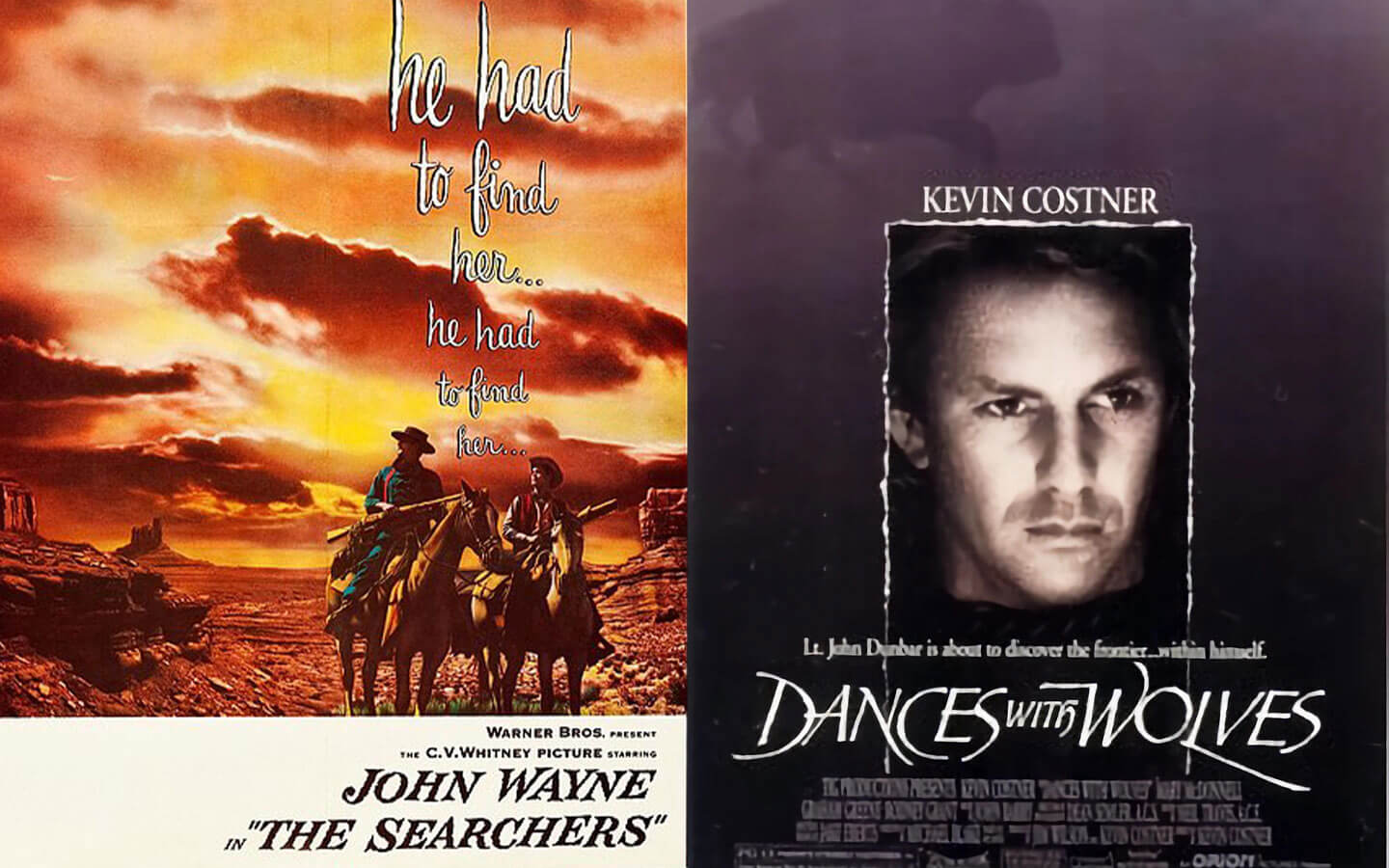Native Americans in the Movies, from stereotyped roles in early Hollywood to nuanced portrayals in films like ‘Dances with Wolves.’ Native Americans have long been featured in Hollywood cinema, albeit often through an ethnocentric lens. The evolution of their portrayal paints a vivid picture of a cultural shift, progressing from vilified caricatures to complex, authentic human beings. This transition reveals not only the changing societal attitudes but also the power of cinema to either perpetuate stereotypes or challenge them.
Early Cinema and Negative Representations
In the early decades of Hollywood, Native Americans were frequently depicted as one-dimensional antagonists in contrast to their white counterparts. They were often represented through harmful stereotypes, painting a grim, unauthentic image of their rich cultures and complex histories.
Pioneering Westerns such as “Stagecoach” (1939) and “The Searchers” (1956), both directed by John Ford, significantly contributed to these negative representations. In “Stagecoach,” Native Americans are reduced to faceless villains, attacking the eponymous stagecoach without provocation or motive. They are portrayed as an ever-present threat, creating an atmosphere of fear and tension that reinforces their image as savages.
Similarly, “The Searchers” has been criticized for its deeply problematic portrayal of the Comanche people. The film presents Native Americans as ruthless and animalistic, with their only purpose being to serve as a backdrop for the white protagonists’ struggle and heroism. This film in particular had a lasting impact on the portrayal of Native Americans, ingraining a stereotypical and pejorative image into the minds of many viewers.
However, these were not the only movies contributing to this issue. “Run of the Arrow” (1957) and “Custer of the West” (1967) are additional examples where Native Americans were negatively portrayed, often as brutish, barbaric obstacles to the advancement of “civilization.”
In retrospect, these films not only grossly misinterpreted Native American culture, but also normalized prejudice and discrimination. They overlooked the rich diversity among tribes and reduced their complex socio-political structures to simple, primitive societies. Furthermore, Native American roles were typically played by white actors in redface, a practice that further degraded and dismissed the authenticity of these diverse cultures.
These stereotypes significantly influenced public perception of Native Americans, promoting a distorted understanding that had real-world consequences on policy and attitudes towards indigenous people. It wasn’t until much later, as social awareness grew, that there was a significant shift in how Native Americans were depicted in the film.
The reaction from Native American communities to these portrayals has been understandably negative. Many have pointed out that these caricatures contribute to ongoing prejudice and ignorance about Native American cultures and history. They’ve criticized Hollywood’s unwillingness to consult Native communities when creating these portrayals, leading to significant inaccuracies and harmful stereotypes. Activists and organizations have long sought to challenge these portrayals, calling for a more nuanced and accurate depiction of Native American life in Hollywood.
A New Dawn with ‘Dances with Wolves’
The release of “Dances with Wolves” in 1990 marked a pivotal shift in Hollywood’s depiction of Native Americans. Directed by Kevin Costner, the film reframed Native Americans from silent and often antagonistic background figures to complex characters whose culture and ways of life were acknowledged and explored with newfound respect.
“Dances with Wolves” tells the story of a Union Army lieutenant who befriends a band of Lakota Sioux during the American Civil War. Notably, the film deviated from traditional Hollywood narratives by attempting to authentically portray Lakota culture and language, shedding light on their customs, spiritual beliefs, and social dynamics. The use of Native American actors in indigenous roles, a novelty at that time, lent a layer of authenticity previously unseen in mainstream cinema.
Costner’s film, however, was not the sole harbinger of this new era of cinematic representation. The 1992 film “The Last of the Mohicans,” directed by Michael Mann, also contributed to challenging long-held stereotypes. The film, while still centered on a white protagonist, made a concerted effort to depict its Native American characters as complex individuals rather than one-dimensional figures.
A decade later, “The New World” (2005), directed by Terrence Malick, was released. This historical drama focusing on the story of Pocahontas and her interaction with English explorers offered a profound exploration of Native American life and European colonization. The film made significant efforts to depict Native American culture authentically, showing their intricate socio-political structures, spirituality, and their relationship with the land.
The positive impact of these films on the representation of Native Americans in Hollywood cannot be overstated. However, it’s important to note that they were not without controversy. While these films were praised for their strides in representation, they were also critiqued for their still largely Eurocentric narratives and occasional inaccuracies.
The response from Native American communities to these films was mixed. Many celebrated the positive shift in representation, expressing relief and gratitude for the long overdue recognition and respect towards their cultures and histories. Yet, they also pointed out areas for improvement, particularly the need for more Native American voices in the filmmaking process – from screenwriting to directing.
The success of these films also ignited a larger conversation about the role of Native Americans in Hollywood. It was a clear indication that audiences were ready for authentic stories about indigenous peoples, told with care, respect, and cultural understanding. These groundbreaking films represented a critical first step in dismantling old stereotypes and forging a new path towards better representation.
Historical Challenge: Can You Conquer the Past?
Answer more than 18 questions correctly, and you will win a copy of History Chronicles Magazine Vol 1! Take our interactive history quiz now and put your knowledge to the test!

